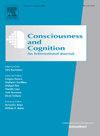启动手势与运动抑制:揭示危险物体引起的运动干扰效应的机制
IF 2
3区 心理学
Q2 PSYCHOLOGY, EXPERIMENTAL
引用次数: 0
摘要
危险物体会抑制由初始手势引起的准备好的运动动作,导致反应时间延长——这种现象被称为危险物体引起的运动干扰效应。以往的研究强调,运动抑制需要危险目标引起的功能激活强度超过抑制阈值。然而,现有的研究混淆了多种因素,包括启动手势、刺激大小、目标取向的能力和低水平的锐边特征。这些方法学上的混淆因素导致了关于出现运动干扰效应的必要条件的模糊性。为了解决这一问题,本研究采用启动-目标抓握一致性判断任务进行了五个实验。实验1控制危险目标和中性目标的形状和握持类型差异。实验2进一步将精确握握条件下的目标尺寸与强力握握条件下的目标尺寸相匹配,消除了刺激尺寸对运动干扰效应的影响。实验3在使用相同刺激的情况下对强力握握和精确握握目标进行启动手势操作(强力握握目标的面积是精确握握目标的两倍)。结果表明,强力握持目标条件下的运动干扰效应与强力握持启动手势有关。实验4和实验5采用不含手柄特征的目标刺激,并对目标抓握经验进行处理,排除了目标取向特征和低水平锐边特征的影响。综上所述,这些发现阐明了运动干扰效应的先决条件,并增强了我们对其潜在运动控制机制的理解。本文章由计算机程序翻译,如有差异,请以英文原文为准。
Prime gesture and motor inhibition: Unveiling the mechanisms of motor interference effects caused by dangerous objects
Dangerous objects can inhibit prepared motor actions elicited by prime gestures, resulting in prolonged reaction times—a phenomenon termed the motor interference effect caused by dangerous objects. Previous research has emphasized that motor inhibition requires the affordance activation strength elicited by dangerous targets to exceed an inhibitory threshold. However, existing studies have confounded affordance activation levels with variations in multiple factors, including prime gestures, stimulus sizes, target orientation affordances, and low-level sharp-edge features. These methodological confounding factors have led to ambiguity regarding the necessary conditions for the emergence of motor interference effects. To address this issue, this study conducted five experiments using a prime-target grip congruency judgment task. Experiment 1 controlled for shape and grip-type differences between dangerous and neutral targets. Experiment 2 further matched target sizes in the precision-grip condition to those in the power-grip condition, which eliminated stimulus sizes as a contributing factor for motor interference effects. Experiment 3 manipulated prime gestures while using identical stimuli for power-grip and precision-grip targets (the area of power-grip targets was twice that of precision-grip targets). Results showed that motor interference effects in the power-grip target condition depended on the power-grip prime gesture. To further investigate potential confounds, Experiments 4 and 5 used target stimuli without handle features and manipulated the target grasping experience to exclude the influences of target orientation affordances and low-level sharp-edge features. Taken together, these findings clarify the prerequisite conditions for motor interference effects and enhance our understanding of their underlying motor control mechanisms.
求助全文
通过发布文献求助,成功后即可免费获取论文全文。
去求助
来源期刊

Consciousness and Cognition
PSYCHOLOGY, EXPERIMENTAL-
CiteScore
4.30
自引率
8.30%
发文量
123
期刊介绍:
Consciousness and Cognition: An International Journal provides a forum for a natural-science approach to the issues of consciousness, voluntary control, and self. The journal features empirical research (in the form of regular articles and short reports) and theoretical articles. Integrative theoretical and critical literature reviews, and tutorial reviews are also published. The journal aims to be both scientifically rigorous and open to novel contributions.
 求助内容:
求助内容: 应助结果提醒方式:
应助结果提醒方式:


